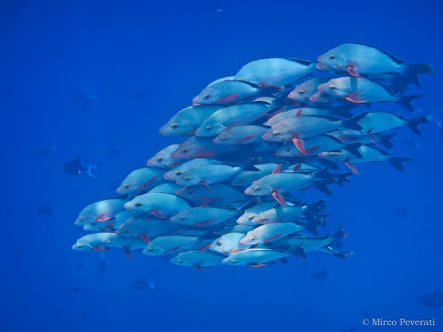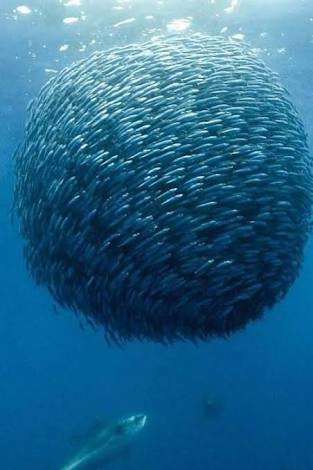How do animels swarm without a leader
From schools of fish to swarms of locusts, simple groups of individuals can create some pretty impressive maneuvers. When humans move as a group, as in an army unit or a marching band, they usually have a leader telling them what to do or a list of instructions to follow. But animals don't. So how do they stay in formation? Simple: by using natural algorithms.

We don't blame you if the word "algorithm" makes your eyes glaze over. Most associate the word with complicated computer code or unintelligible mathematical formulas. But at its most basic, an algorithm is just a set of rules. And anything can follow rules — even a brainless amoeba like Dictyostelium discoideum.
Slime molds of these single-celled organisms can actually form a multicellular, moving "slug" in their search for food. They achieve this by following two rules:
1. Secrete the chemical cAMP when you're hungry.
2. When you sense cAMP in your vicinity, move toward it and begin secreting cAMP yourself.
By following that natural algorithm, all of the cells converge and produce cAMP in waves, which cause the cells to move in waves themselves. Those waves produce locomotion, helping the group crawl around in search of food faster than they could on their own.
But what about something a little more advanced, like a school of fish? In the hazy blue of the water, the collective movement of their silvery bodies makes them almost look like they're magnetized. (They're not, obviously.) Fish, too, follow simple instructions. Through visual contact and sensory cues — fish have an organ along each side of their bodies that can sense subtle changes in pressure — each member of the school makes sure they're not too close, but not too far from any other member. If a neighbor enters a fish's "zone of repulsion" (great band name, by the way), that fish immediately turns away to avoid a crash. Just beyond that zone is the "zone of orientation," where each fish keeps tabs on which way their neighbors are going and swims to match them.

Birds do something similar. Starlings are small black songbirds that move together in pulsating swarms scientists call "murmurations." In 2013, Italian researchers created a mathematical model to determine the best way for any individual starling to achieve the best coordination in a flock with the least effort. It determined that for a flock to be the most efficient, each individual should follow the movement of its seven closest neighbors — exactly the number scientists observed starlings tracking in real flocks. Starlings flying in formation don't need to know what all 2,000 of their brethren are doing; as long as they keep tabs on seven of their closest neighbors, they'll know how to move. If a predator attacks, this murmuration makes the birds much more likely to escape unscathed.
Congratulations @gail102! You have completed some achievement on Steemit and have been rewarded with new badge(s) :
Click on any badge to view your own Board of Honor on SteemitBoard.
For more information about SteemitBoard, click here
If you no longer want to receive notifications, reply to this comment with the word
STOPCongratulations @gail102! You have completed some achievement on Steemit and have been rewarded with new badge(s) :
Click on any badge to view your own Board of Honor on SteemitBoard.
For more information about SteemitBoard, click here
If you no longer want to receive notifications, reply to this comment with the word
STOPCongratulations @gail102! You have received a personal award!
Click on the badge to view your Board of Honor.
Do not miss the last post from @steemitboard:
Congratulations @gail102! You received a personal award!
You can view your badges on your Steem Board and compare to others on the Steem Ranking
Do not miss the last post from @steemitboard:
Vote for @Steemitboard as a witness to get one more award and increased upvotes!